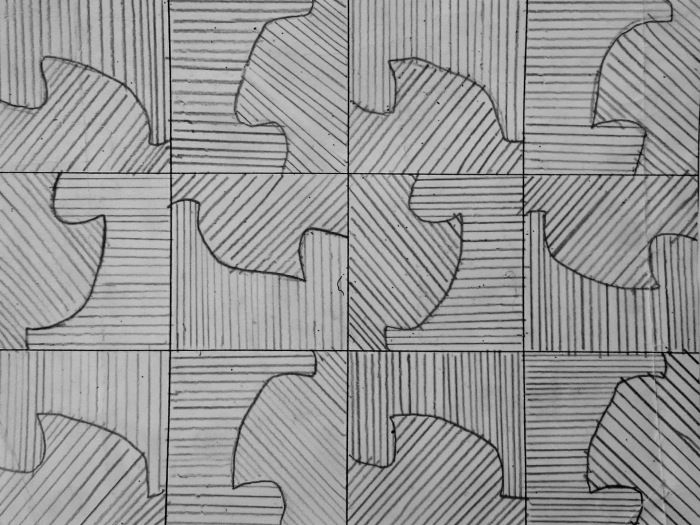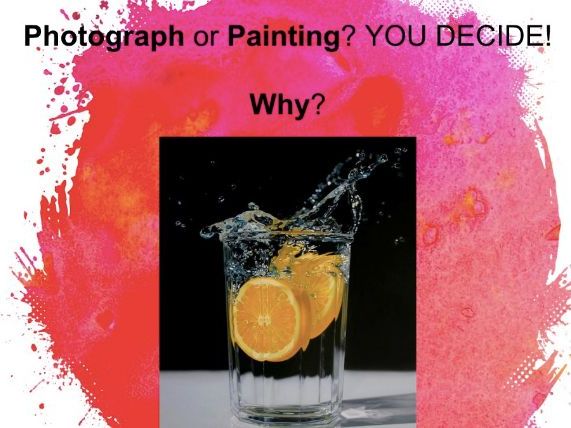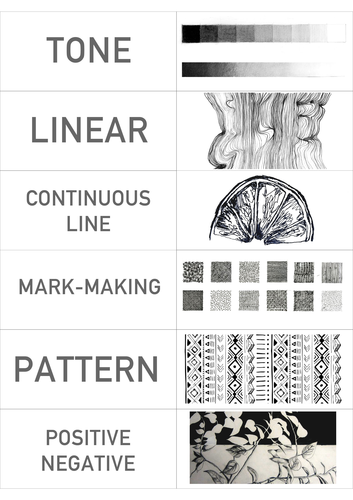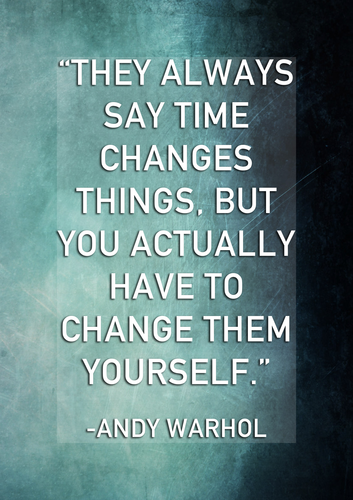
33Uploads
58k+Views
11k+Downloads
All resources

GCSE Art Scheme of Work - The Blue Planet
This is a full GCSE scheme of work for a project based on The Blue Planet.
It covers all four assessment objectives and explains to students how they can achieve different grades. It guides them through their presentation and gives examples of different levels of work.
The project includes slides for entry tasks / starters / plenaries etc and has a full range of artists’ work to show. The lessons are planned out as I used them, however you can easily remove or change etc. any slides you want to.
There are 87 slides in total.
This project could easily be adapted for Natural Forms, Pollution or similar themes. It explores:
AO1 - research. It shows examples of excellent research design sheets and sketchbooks
AO2 - experimentation. It includes a wide range of experiments and ideas for students.
AO3 - annotations and design ideas. There are a range of examples of how to annotate work and various ideas for final pieces.
AO4 - final designs. It clearly explains to students what they need to do to reach different grades and marks for their final pieces.
You can read more about this GCSE Art full scheme of work here.

Abstract Still Life Painting Scheme of Work KS3
A KS3 painting project based on Abstract Still Life. This full project covers a series of lessons, teaching students about observational drawing, colour theory, pattern and mark-making and painting techniques.
It includes artist research, experimentation, developing ideas and final outcomes.
I have taught it with Y8 KS3 students, however it can be easily adapted for any year group. The project includes entry tasks / starters and plenaries / clear lesson outcomes and examples of students work at each stage.

Observational Wrapper Drawing Scheme of Work KS3
This is an observational drawing scheme of work to develop Year 7 students’ drawing skills at the start of the year.
This scheme of learning looks first at the hyperrealist artist Marcello Barenghi, then students create artist research pages in their sketchbooks and watch YouTube videos of him working. There are teacher notes in the PowerPoint and links to the clips.
Students are shown how to draw from direct observation, bringing in wrappers to draw and understanding how to be inspired by an artist.
Students learn how to control their pencils properly, and start to use key vocabulary such as shape, proportion, detail and tone. There are starter activities, plenaries and homework tasks all in the presentation. There are also printable resources (in the slides)- I have made it as easy as possible to use!
As I teach this to new Y7 students, it is not a long project and students aim for one complete drawing rather than a series. The aim is to have a high quality finished piece.
Students love this project as they can watch the YouTube videos and draw their favourite sweet / crisp wrappers!
This resource includes starters / plenaries etc for the whole project, with examples of students’ work at each stage.

Art Lesson - Drawing the Human Figure
This is a stand-alone art lesson that helps to teach students how to draw the correct proportions of the human figure. This is an introduction to figure drawing, which can be used in a bigger scheme of work looking at the human figure, or it can be used as a cover lesson.
This lesson can be used with KS3 or KS4 students and can be easily differentiated. It includes 3 main activities (starter - main - plenary) and can be taught by a non-specialist. It has clear learning objectives and an extension.
It encourages students to look carefully at the proportions of the human body.
I have made this lesson as I was unable to find a quick one-off lesson that was not just focused on drawing. This lesson has different activities to keep students engaged.
Any teacher would be able to deliver the lesson, you just need to make a photocopy of one of the resources attached to the PowerPoint.

Creating patterns inspired by MC Escher full art project
This is an art scheme of work focusing on pattern design. Using MC Escher as a reference and research point, the lessons look first at optical illusions, then at different aspects of pattern design, pattern repeats and colour theory. The lessons are designed for students of all abilities, and draw on any previous work (students select sections of their work, or photographs etc. to work from).
I have used this scheme of work with KS3, however it could easily be differentiated to KS2 or 4.
It includes full lessons, with Starter / Plenary / Homework activities.

Effective Starters & Plenaries for Art and Design
I have created a huge PowerPoint presentation with over 45 starter or plenary activities for your art classes.
The activities are all art-related and can be used in KS3 or KS4 art lessons, either as entry tasks, starters, plenaries or exit questions. Sometimes I put the question on the board at the start of the lesson then come back to it at the end.
The slides are made up of questions, challenges, thought prompts, image analysis, riddles, true or false competitions, thunks and more. Some are very general so can be used across any class or topic, and some are more specific and related to different art movements - for example, Pop Art or Graffiti.
You can use the slides to generate discussion or have students discuss things in groups/pairs etc. I have made them to be as adaptable to your lessons/teaching as possible.

Mark Making and Texture KS3 and KS4
A lesson on mark making and texture for use in KS3 and KS4. Has a clear task/learning objective. Can easily be differentiated and links to relevant artist. Includes powerpoint presentation with a starter, main (with challenge question) and plenary. Can be adjusted depending on what materials/resources you have in school - this one uses Indian ink.

Mark-making step-by-step video (painting with PVA glue) for KS4
A step-by-step video for KS4 pupils exploring mark-making. I used this to allow pupils to self-pace their lesson.
The video was made specifically for a Landscape project, but you can use it with other topics exploring mark-making.
I used this for one lesson at KS4, most pupils did not finish their piece in one lesson. Excellent for differentiation as pupils can stop, rewind and rewatch parts of the video if they need to.

Art keywords activity for paired work (starter or plenary)
Use the resource to test your pupils knowledge on keywords and techniques.
One half of the pair has the keyword, the other has the example. Mix up the pairs and let pupils choose one, then they have a limited amount of time to find their partner. Pupils must work co-operatively to discuss which technique matches the correct keyword.
Good for getting pupils into small groups or pairs and also tests their knowledge of techniques. I have used as a quick plenary or starter.
Keywords included are:
Tone, Linear, Continuous Line, Mark-Making, Pattern, Positive & Negative

Inspirational Artist Quotes (Art classroom motivational display posters)
10 wonderful, inspirational quotes from world famous artists.
All with a unique art-textured background, ideal for decorating your classroom. Good for encouraging hard work and effort rather than talent:
“I am seeking. I am striving. I am in it with all my heart.” Vincent van Gogh
“Creativity takes courage.” Henri Matisse
“They always say time changes things, but you actually have to change them yourself.” Andy Warhol
“Art washes away from the soul the dust of everyday life.” Pablo Picasso
“Great art picks up where nature ends.” Marc Chagall
“The job of the artist is always to deepen the mystery.” Francis Bacon
“To create one’s own world takes courage.” Georgia O’Keeffe
“Art is not what you see, but what you make others see.” Edgar Degas
“Have no fear of perfection, you’ll never reach it.” Salvador Dali
“If people knew how hard I worked to get my mastery, it wouldn’t seem so wonderful at all.” Michelangelo
Simply print out and stick up, these are designed at A4 size but you could size them up to A3.

Rule of Thirds guide poster for photography
A wall display in size A3 and A4 for the Rule of Thirds in photography. Explains the rule of thirds in 3 simple steps, with an example. Also includes a question about how the rule of thirds was achieved in the example.
Great for the photography classroom, easy to refer to and in a clear, simple format. Print out the poster and use in your classroom, give pupils time to read and understand the steps, then try themselves. Encourages pupils to use the rule of thirds when editing their work too.

Teacher Training Observation Record Sheet
A record sheet I've put together for trainee teachers who are observing classes. I've used this for secondary school observations.
Includes questions you should ask yourself when observing in classes, from date and time to professional development.
Includes questions about the lesson in hand and self reflection.
Easy to use with clear headers for different questions and data needed in your evidence.

Continuous Line Drawing
Continuous Line Drawing lesson for a 1 hour Art Class (mine had 25 - 30 students).
I have updated this lesson to include more drawing activities and student evaluations
Times can be changed for class sizes. I repeated the timed drawings with different materials (ie. pen, pencil, felt tip, ink) and objects used to extend times. I also extended the discussion times if it was a smaller class.
The presentation introduces a continuous line drawing artist, has a discussion about their work, introduces keywords and has three drawing activities (continuous line, blind and in pairs - moving paper instead of the pen to draw!)
Includes artist examples, teacher examples, different materials / techniques and a plenary. Encourages art-specific language to describe work.
You will need some natural forms for students to draw. I chose dried fruit, shells, leaves etc.
There is more information about this lesson here.













